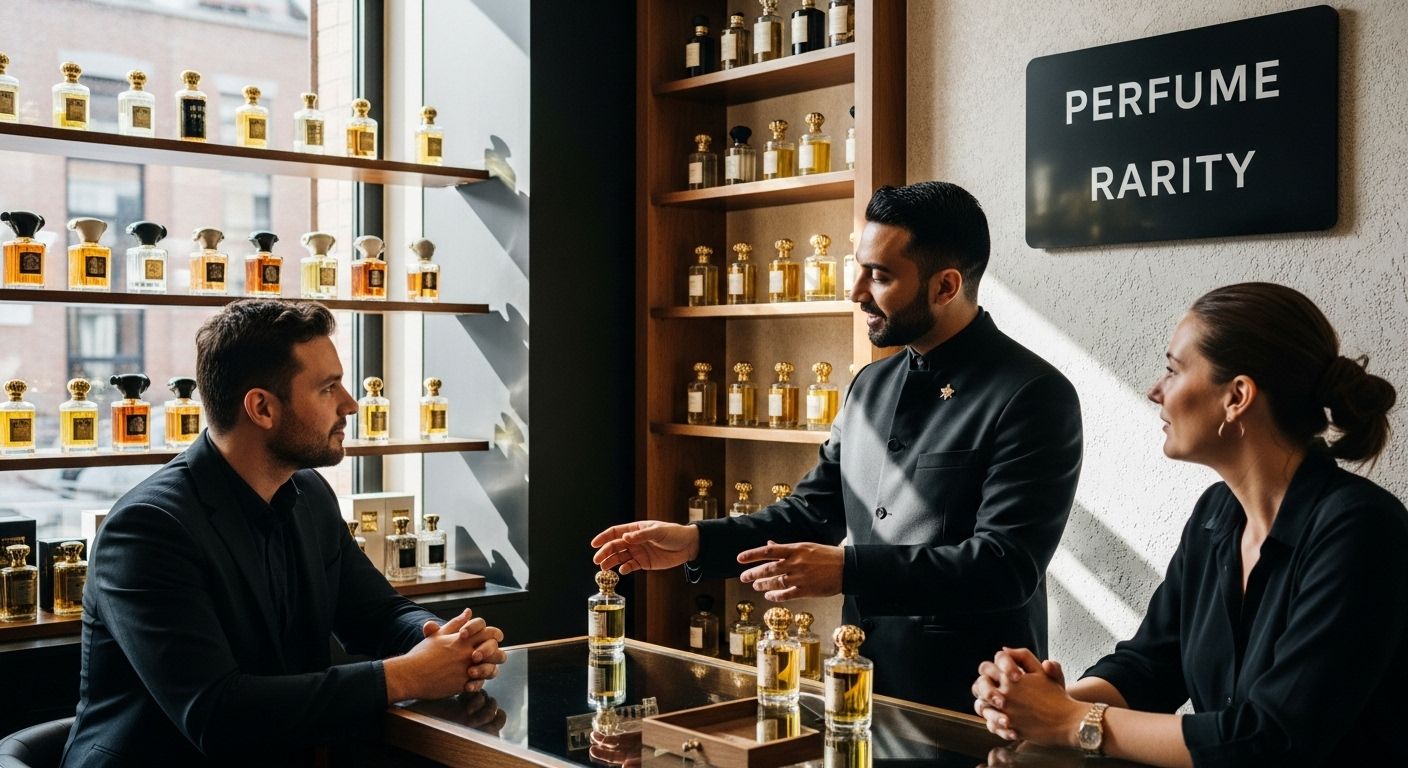Article: Understanding the Role of Olfactory Artistry in Perfumery
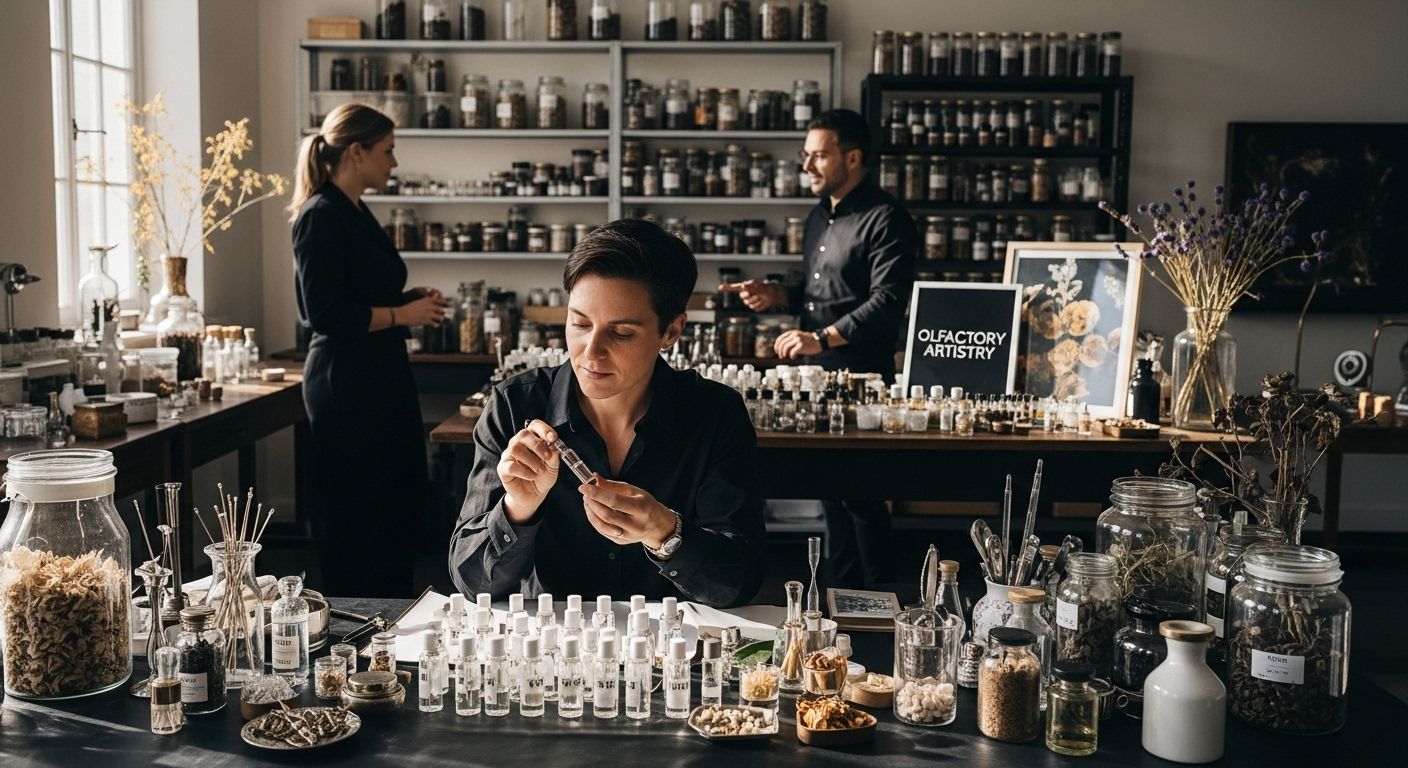
Understanding the Role of Olfactory Artistry in Perfumery
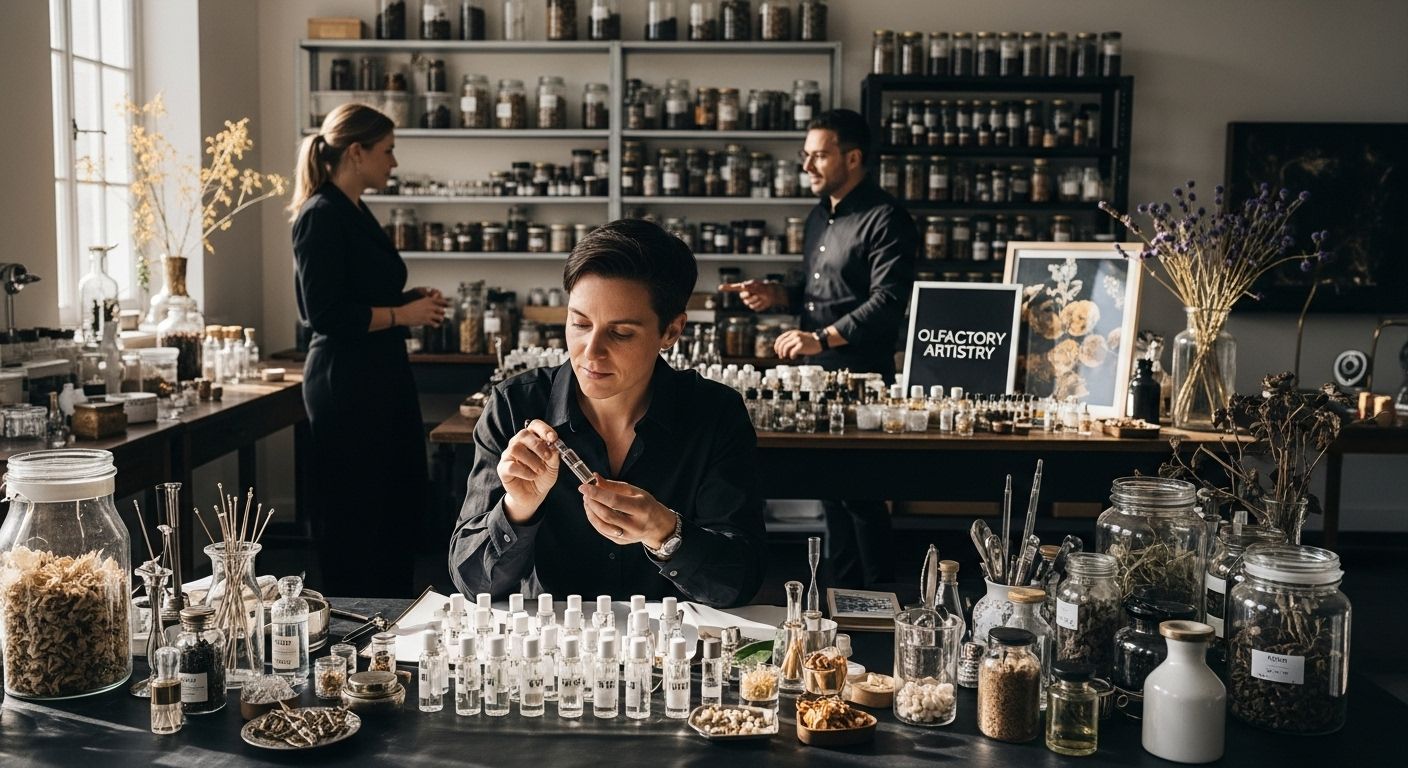
Olfactory artistry is redefining what it means to create a fragrance and turning the act of smelling into a genuine form of art. Most people think perfumes are just about mixing pleasant scents, but scientists have proven that extensive olfactory training literally reorganizes parts of the human brain. This kind of neural transformation shows that crafting perfumes is not just chemistry or creativity. It is a profound sensory experience with the power to reshape how we think and feel about the world around us.
Table of Contents
- Defining Olfactory Artistry: What It Is And Its Significance
- The Science Of Smell: How Olfactory Perception Works
- The Artistic Process: Crafting Unique Fragrances Through Olfactory Artistry
- Cultural Influences: The Impact Of Community And Tradition On Olfactory Artistry
- Future Trends: The Evolving Role Of Olfactory Artistry In Perfumery
Quick Summary
| Takeaway | Explanation |
|---|---|
| Olfactory artistry combines science and creativity | This discipline integrates chemical understanding, psychological insights, and artistic intuition to create fragrances that evoke emotions and memories. |
| Fragrance as cultural artifact | Scents communicate identity and heritage, bridging personal and collective experiences across different cultures and historical contexts. |
| Technological advancements are reshaping perfumery | New tools like AI and molecular modeling are enhancing the precision of fragrance creation, leading to innovative and personalized scent experiences. |
| Sustainability is becoming essential in fragrance design | Perfumers are prioritizing eco-friendly materials and techniques to reduce environmental impact while maintaining fragrance quality. |
| Fragrance creation is a form of emotional storytelling | Each scent conveys complex narratives that resonate with individual experiences, making perfume creation a profound artistic expression. |
Defining Olfactory Artistry: What It Is and Its Significance
Olfactory artistry represents a sophisticated intersection between sensory perception, scientific understanding, and creative expression within the realm of perfumery. At its core, this discipline transforms scent from a mere biological function into a nuanced form of artistic communication.
The Essence of Olfactory Expression
Olfactory artistry goes beyond simply combining fragrant compounds. It involves crafting intricate sensory experiences that evoke emotions, memories, and complex psychological responses. Perfumers functioning as olfactory artists meticulously select, blend, and balance molecular components to create aromatic compositions that transcend traditional fragrance boundaries.
The process requires profound knowledge across multiple domains:
- Chemical understanding of aromatic molecules
- Psychological insights into sensory perception
- Creative intuition for emotional resonance
- Technical expertise in ingredient interactions
Scientific and Creative Foundations
According to a study published in PubMed, extensive olfactory training leads to structural reorganization in brain regions associated with sensory processing. This scientific insight underscores how olfactory artistry is not merely about mixing scents but represents a sophisticated neurological and creative practice.
The following table compares how olfactory artistry integrates both scientific and creative approaches for a holistic fragrance creation process.
| Aspect | Scientific Approach | Creative Approach |
|---|---|---|
| Ingredient Selection | Based on chemical structure, molecular analysis | Guided by intuition and desired emotional effect |
| Scent Composition | Follows chemical compatibility and molecular interactions | Uses artistic vision to craft unique aromatic narratives |
| Sensory Perception | Utilizes neurological and psychological research | Draws on memory, culture, and emotional resonance |
| Evaluation and Testing | Employs laboratory methods and scientific standards | Relies on subjective evaluation and personal aesthetics |
Perfumers approach their craft like composers, using fragrant notes as musical instruments. Each ingredient functions as a unique sound. Some provide top notes reminiscent of sharp, immediate impressions. Others create middle notes representing sustained emotional undertones. Base notes establish deep, lingering foundations that anchor the entire aromatic narrative.
Significance in Cultural and Personal Experience
Olfactory artistry bridges personal experience with universal human sensory perception. Fragrances communicate complex narratives without words. They can transport individuals across memories, cultures, and emotional landscapes. A single scent might evoke childhood memories, represent cultural heritage, or communicate sophisticated personal identity.
By treating fragrance as an art form, perfumers elevate scent from a functional product to a profound medium of human expression.
The Science of Smell: How Olfactory Perception Works
Olfactory perception represents a complex neurobiological process that transforms chemical signals into meaningful sensory experiences. This intricate system allows humans to detect, differentiate, and interpret an extraordinary range of molecular compounds through sophisticated neural mechanisms.
Molecular Detection and Neurological Processing
The human olfactory system operates through an intricate network of specialized receptors located within the nasal cavity. When aromatic molecules enter this space, they interact with approximately 400 distinct olfactory receptor types. These receptors function like molecular locks, recognizing specific chemical structures and triggering neurological responses.
Key components of olfactory perception include:
- Olfactory receptors in nasal epithelium
- Specialized neurons that transmit sensory information
- Neural pathways connecting nose to brain regions
- Complex signal processing mechanisms
Neural Mapping and Signal Interpretation
According to a groundbreaking Science publication, researchers have developed a principal odor map that demonstrates how the brain systematically organizes and interprets different smells. This neural mapping reveals that smell perception is not a linear process but a multidimensional experience involving multiple brain regions.
When an aromatic molecule binds with a receptor, it generates an electrical signal transmitted through the olfactory bulb. This signal then travels to several brain areas, including the limbic system, which processes emotional responses, and the neocortex, responsible for conscious smell recognition.
Complexity of Sensory Discrimination
Olfactory perception goes beyond simple detection. Humans can distinguish between thousands of different odors by recognizing minute molecular variations. A single structural change in a molecule can dramatically alter its perceived fragrance, demonstrating the remarkable sensitivity of our olfactory system.
This extraordinary sensory capability explains why perfumers can create complex aromatic compositions. By understanding the intricate relationship between molecular structure and perceived scent, they craft fragrances that evoke specific emotional and psychological responses.
The Artistic Process: Crafting Unique Fragrances Through Olfactory Artistry
Crafting a unique fragrance represents an extraordinary blend of scientific precision and creative intuition. Perfumers transform raw molecular components into sensory experiences that evoke complex emotional landscapes through meticulous artistic methodology.
Compositional Architecture of Fragrance
Fragrance creation follows a sophisticated structural approach similar to musical composition. Perfumers conceptualize scents using a complex framework of notes that unfold temporally, creating multi-dimensional aromatic narratives. Each fragrance becomes a carefully orchestrated symphony of molecular interactions.
Below is a table summarizing the key elements and roles of different fragrance notes in olfactory artistry, helping clarify the compositional structure used by perfumers.
| Fragrance Note Type | Timing of Perception | Function in Fragrance | Emotional/Artistic Role |
|---|---|---|---|
| Top Notes | Immediately upon application | Provide initial sensory impression | Create first emotional impact, set mood |
| Middle Notes | After top notes fade | Establish core character and body | Convey deeper emotions, sustain story |
| Base Notes | Linger after middle notes | Form lasting foundation and anchor scent | Leave enduring impression, create legacy |
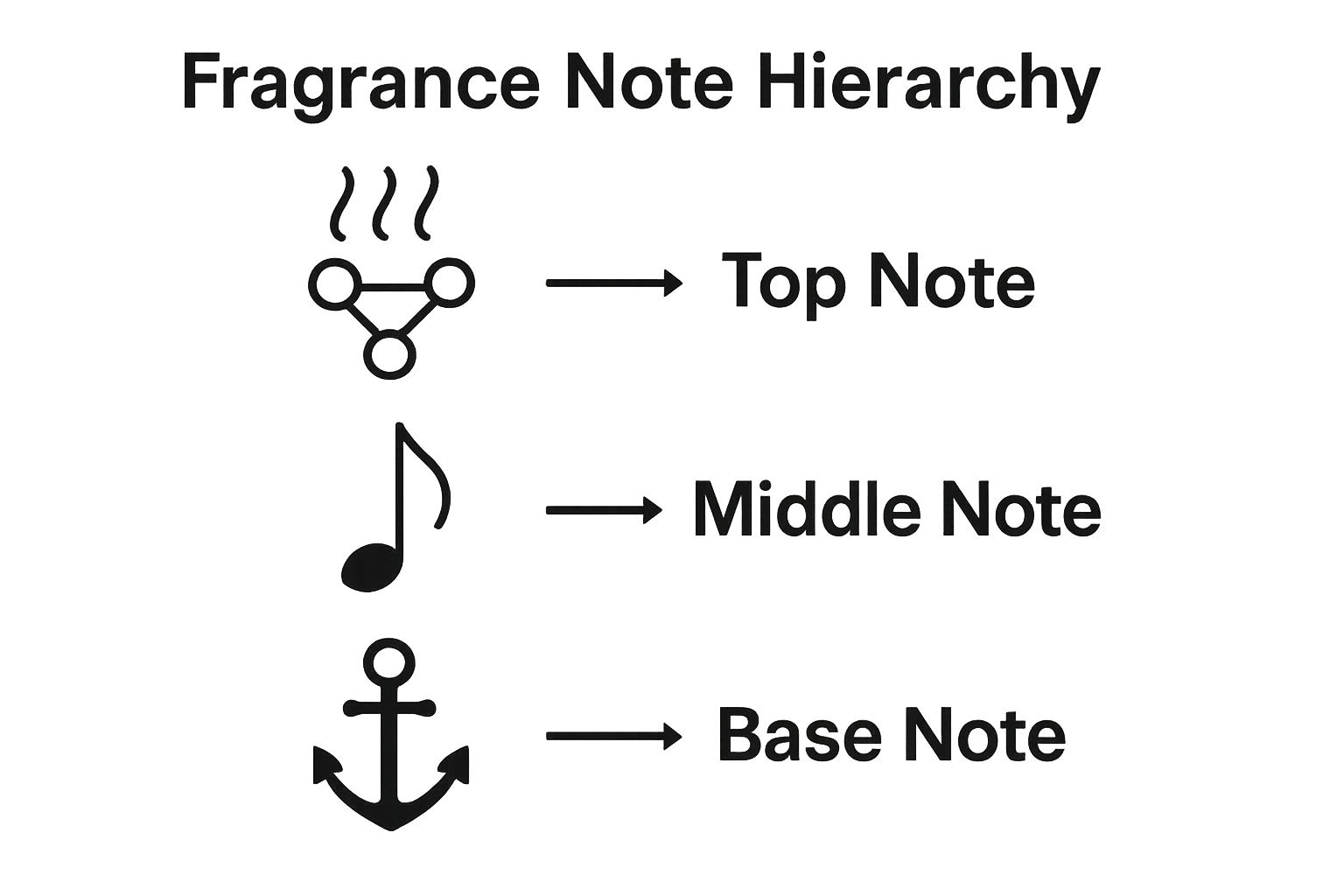
Key elements in fragrance composition include:
- Top notes providing initial sensory impressions
- Middle notes establishing emotional undertones
- Base notes creating lasting foundational impressions
- Molecular interactions between aromatic compounds
Scientific and Creative Methodology
According to research in perfume engineering, perfumery has evolved from pure artistic expression to a sophisticated integration of scientific analysis and creative innovation. Perfumers now utilize advanced techniques to analyze and replicate natural scents, synthesizing molecular structures that capture intricate sensory experiences.
The artistic process involves understanding how different aromatic molecules interact, balance, and transform. Perfumers function as sensory architects, meticulously selecting and combining ingredients to create harmonious olfactory experiences that transcend mere fragrance.
Emotional and Sensory Storytelling
Beyond technical skill, fragrance creation represents a profound form of emotional storytelling. Each scent becomes a complex narrative designed to evoke specific psychological and emotional responses. Explore our unique fragrance philosophy to understand how molecular artistry can communicate deep personal experiences.
Perfumers approach their craft with the sensitivity of poets and the precision of scientists. They understand that a truly remarkable fragrance is not just a combination of molecules but a carefully constructed emotional journey that resonates with individual human experiences.
Cultural Influences: The Impact of Community and Tradition on Olfactory Artistry
Olfactory artistry transcends mere scent creation, representing a profound cultural dialogue that connects human experiences across generations and geographical boundaries. Fragrances serve as powerful cultural artifacts that communicate complex narratives of identity, heritage, and collective memory.
Sensory Cultural Mapping
Cultural perceptions of scent vary dramatically across different societies. According to research on cross-cultural odor perception, what might be considered pleasant in one culture could be perceived entirely differently in another. For instance, certain aromatic compounds like wintergreen and anise carry distinctly different emotional and sensory associations depending on regional cultural contexts.
Key cultural dimensions of olfactory experience include:
- Regional ingredient preferences
- Historical symbolic meanings of specific scents
- Ritualistic and ceremonial fragrance applications
- Emotional and psychological associations
Tradition and Sensory Heritage
Fragrances represent living archives of cultural knowledge. Traditional perfumery techniques passed through generations encode intricate stories of community practices, social interactions, and historical transformations. Each aromatic composition becomes a nuanced narrative reflecting the collective sensory experience of a specific cultural group.
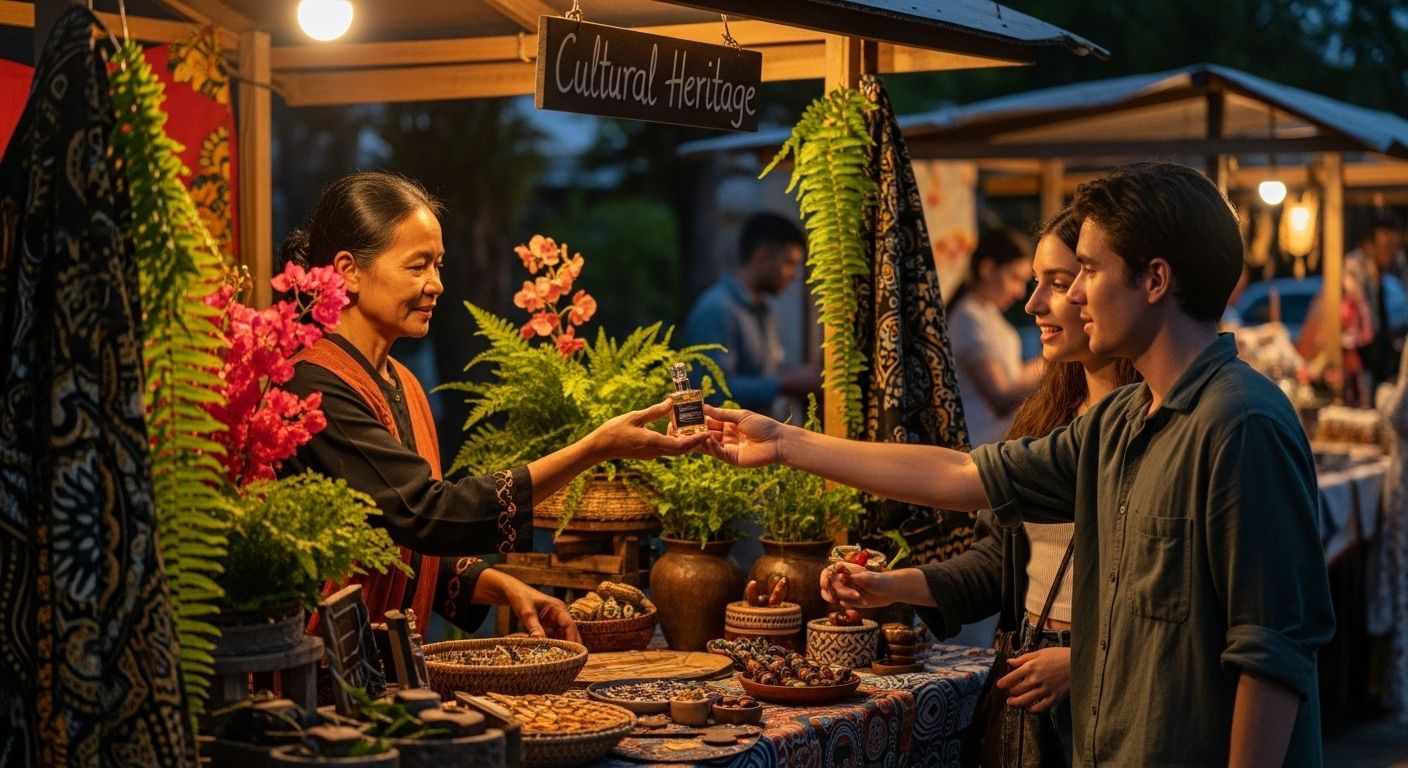
Perfumers functioning as cultural translators understand that scent goes beyond molecular composition. They recognize fragrances as complex communication systems that bridge individual experiences with broader cultural landscapes.
Emotional and Social Signification
Beyond aesthetic appreciation, fragrances operate as powerful social and emotional markers. They communicate personal and collective identities, signaling belonging, status, and individual narratives. Explore our heritage-inspired fragrances to understand how scent can embody deep cultural connections.
The art of perfumery thus emerges as a sophisticated form of cultural dialogue. Each fragrance becomes a sensory text that speaks to human experiences, bridging personal memories with collective cultural narratives through the profound language of scent.
Future Trends: The Evolving Role of Olfactory Artistry in Perfumery
Olfactory artistry stands on the brink of a transformative era, where technological innovation, sustainability concerns, and creative exploration are reshaping the landscape of fragrance design. The future of perfumery promises a radical reimagining of how scents are conceptualized, created, and experienced.
Technological Integration and Innovation
According to cutting-edge research in artificial intelligence, emerging technologies are revolutionizing fragrance development. Artificial intelligence now enables perfumers to predict molecular interactions and design scents with unprecedented precision. These advanced computational models can analyze complex aromatic compounds, creating possibilities for perfume creation that were previously unimaginable.
Key technological advancements in olfactory artistry include:
- Machine learning algorithms for scent prediction
- Advanced molecular modeling techniques
- Data-driven fragrance composition
- Computational sensory analysis
Sustainability and Ethical Innovation
The future of perfumery is deeply intertwined with environmental consciousness. Emerging trends focus on developing sustainable, biodegradable fragrance materials that minimize ecological impact. Perfumers are increasingly exploring renewable sources and innovative synthesis techniques that reduce environmental footprint while maintaining exceptional sensory experiences.
Perfume houses are now reimagining their approach. They recognize that true artistic innovation requires responsible creation, balancing aesthetic excellence with environmental stewardship. Discover our commitment to sustainable artistry and explore how cutting-edge techniques are transforming fragrance creation.
Personalization and Sensory Experience
The next frontier of olfactory artistry emphasizes hyper-personalized fragrance experiences. Advanced technologies enable more nuanced understanding of individual sensory preferences, allowing for increasingly tailored aromatic compositions. Perfumers are no longer just creating scents but crafting deeply personal sensory narratives that resonate with individual emotional landscapes.
This evolution represents more than technological advancement. It signifies a profound shift in how we understand and experience fragrance as a form of personal and artistic expression.
This table outlines the major future trends shaping olfactory artistry in perfumery, providing an at-a-glance view of new directions in the industry.
| Trend | Description | Impact on Perfumery |
|---|---|---|
| Technological Integration | Use of AI and molecular modeling for scent creation | Enhanced precision and innovation |
| Sustainability Initiatives | Emphasis on eco-friendly, renewable, and biodegradable materials | Reduced environmental impact |
| Personalization | Tailoring scents to individual preferences using technology | Unique, personalized fragrance experiences |
Experience Authentic Olfactory Artistry at Its Highest Level
Have you ever searched for a fragrance that is more than just a pleasant aroma? The article explores how true olfactory artistry combines creative intuition, advanced science, and deep cultural storytelling. Many struggle to find scents that are thoughtfully crafted or evoke a genuine emotional response. Typical perfumes can feel generic or mass-produced, missing the individuality and feeling described in unique perfumery. At Adar Perfumes, each creation begins as an authentic journey into rare ingredients and slow, hand-crafted technique. Our signature collections, such as Alpha 11 and Against All Odds, are handcrafted from the world’s most exclusive raw materials. Every bottle is a work of art, packaged in hand-painted, one-of-a-kind designs carved from precious wood and marble. You do not just wear our scents. You become part of their story.
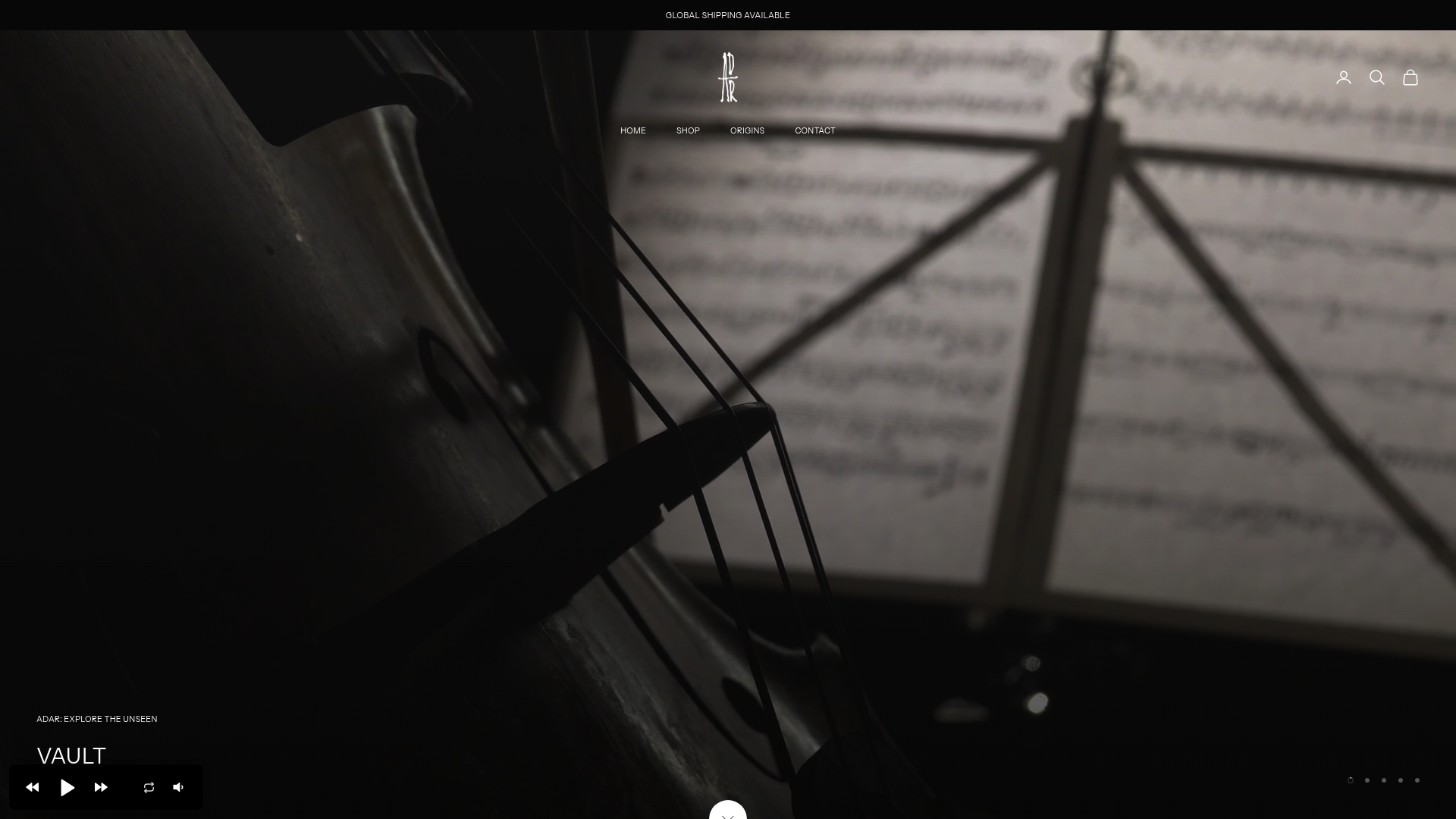
Ready to discover a fragrance that truly reflects your individuality? Visit Adar Perfumes now to experience the true meaning of olfactory artistry. Limited availability of our collectible, slow-made perfumes means you can bring home a piece of perfumery’s highest niche today.
Frequently Asked Questions
What is olfactory artistry in perfumery?
Olfactory artistry is the blend of science and creativity in creating fragrances. It involves the careful selection and combination of aromatic molecules to evoke emotions, memories, and complex experiences through scent.
How do perfumers create unique fragrances?
Perfumers create unique fragrances by blending different top, middle, and base notes, much like composing music. This process requires a deep understanding of how various aromatic compounds interact and the emotional responses they can evoke.
What role does science play in olfactory artistry?
Science is integral to olfactory artistry as it provides the necessary knowledge about aromatic molecules and sensory perception. Research into how the brain processes smells helps perfumers craft fragrances that resonate emotionally and cognitively with users.
How can scents influence our emotions and memories?
Scents can evoke strong emotional responses and trigger memories due to their connection with the limbic system in the brain. This allows fragrances to become powerful tools for storytelling and personal expression, making them significant in both personal and cultural contexts.

